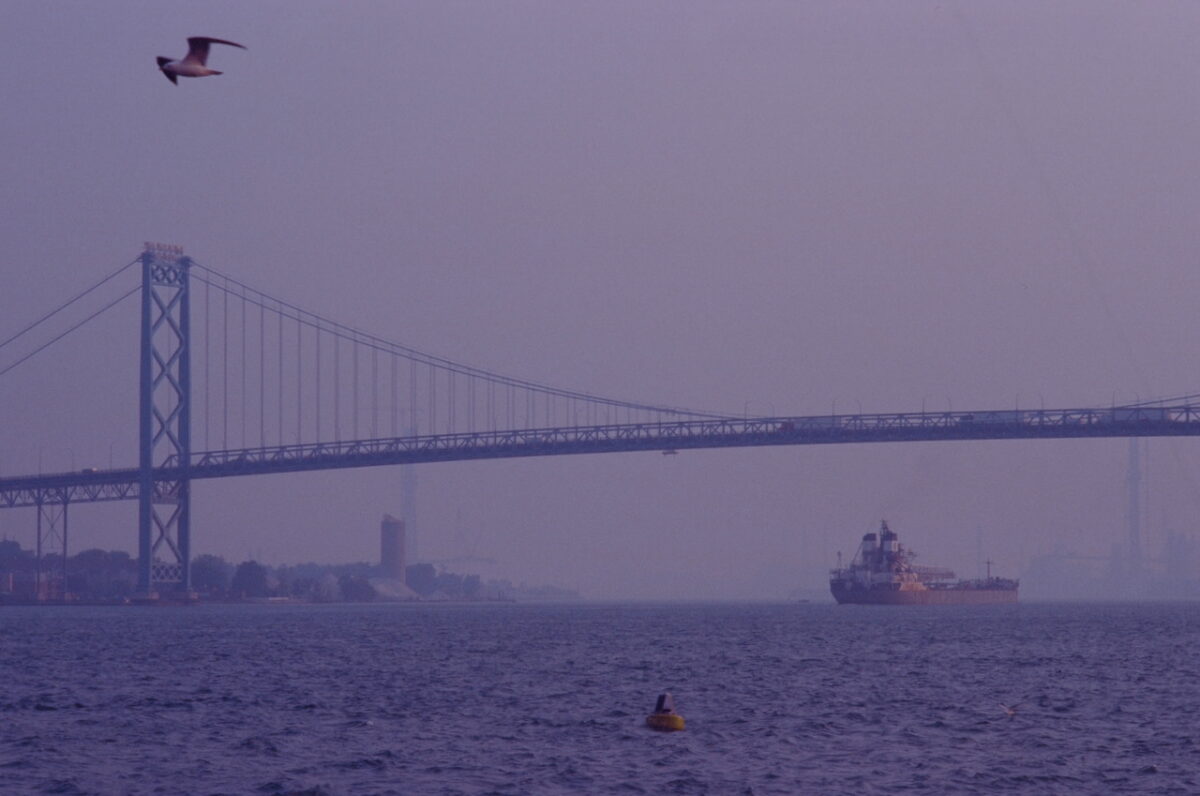Overview:
-Detroit's air quality receives a failing grade in the American Lung Association's State of the Air Report, with climate change and Canadian wildfires reversing progress.
-Over 77 million Americans live in areas with unhealthy pollution levels.
-Lung Association calls for states to mandate cleaner energy sources and reduce building emissions.
Detroit once again received an F for air quality in The American Lung Association’s annual State of the Air Report Wednesday, with climate change helping to reverse decades of progress on air pollution.
This is the first State of the Air Report, which includes data from 2021-2023, to show the impact of the 2023 Canadian wildfires, which made Midwestern cities like Columbus, Minneapolis, Chicago, and Detroit the worst in the nation for particulate matter pollution.
This year, Detroit was added to the top 25 cities for daily fine particulate matter pollution, or PM 2.5, reflecting the impact of wildfire smoke, while the area is ranked sixth worst in the nation for annual PM 2.5 pollution.
Annual levels generally reflect industrial and transportation pollution, whereas high daily levels are more likely to indicate events like wildfires, Katherine Pruitt, national senior director for policy at the American Lung Association, previously told Planet Detroit.
Wayne County received an “F” for ozone pollution in this year’s report, experiencing 17 high ozone days between 2021 and 2023.
Ozone pollution can cause respiratory problems and increase the frequency of asthma attacks, while PM 2.5 is linked to cardiopulmonary problems and premature death.
Climate drives declines in local, national air quality
Air quality is declining because of extreme heat, drought, and wildfires associated with climate change caused by humans, the report finds. People of color are more than twice as likely as white people to live in communities with a failing grade for daily PM 2.5, annual PM 2.5, and ozone. Hispanic people are three times as likely to live in an area that fails on all three metrics.
“Warmer temperatures are increasing our ozone levels and wildfires are causing dramatic spikes in our particle pollution,” Kezia Ofosu Atta, Michigan and Ohio advocacy director for the American Lung Association, told Planet Detroit.
Global heating could lead to an increase in ozone pollution because it’ formed by a chemical reaction between substances like nitrogen oxides and volatile organic compounds in the presence of heat and sunlight. Wildfire smoke also produces gases that add to ozone formation.
The report advocates for defending recently finalized Environmental Protection Agency air quality rules, including updated standards for annual PM 2.5, power plant emissions, and vehicle emissions. EPA Administrator Lee Zeldin recently pitched rollbacks to these regulations as part of an effort to dial back 31 pollution rules. A report from the nonprofit Environmental Protection Network suggests these rollbacks could lead to 200,000 premature deaths by 2050.
Detroit faces air quality challenge under new PM 2.5 standard
The Michigan Department of Environment, Great Lakes, and Energy has alerted the EPA that Wayne and Kalamazoo counties fail to meet the updated air quality standards for fine particulate matter, initiating their redesignation as nonattainment areas.
Study: 2023 Canadian wildfires led to 169 deaths in Michigan
Public health expert says Michigan residents need to recognize the deadly risk posed by smoke waves and take measures to protect themselves and their communities.
Dirty air: Wayne County gets ‘F’ in 2024 State of the Air report
The State of the Air report from the American Lung Association says climate change is dramatically increasing the number of days with poor air quality nationwide.
Air pollution threat grows nationwide
A rising number of people in the U.S. are dealing with air pollution, rolling back progress made after the passage of the Clean Air Act in 1970.
The State of the Air Report finds over 77 million people live in counties that experienced unhealthy spikes in PM 2.5 pollution, the highest number in 16 years, and nearly half the nation is living in areas with unhealthy air.
The number of “unhealthy” and “very unhealthy” days for particle pollution continued to increase from previous reports. There were 1,280 unhealthy days measured from 2021-2023 and 231 very unhealthy days. There were also 27 “hazardous” days, fewer than were reported in last year’s report, but a significant change from the period between 2004 and 2016 when there were no such days .
The government Air Quality Index defines unhealthy days as a risk to members of the public and hazardous days as an emergency where everyone is likely to be affected.
Ofosu Atta said that intense air pollution days place people at a higher risk of dying. In 2023, wildfire smoke led to an estimated 169 deaths in Michigan and over two dozen fatalities in Metro Detroit, according to data published by Cornell University.
Lung Association urges action on air quality
State and federal action may be needed to rein in both air pollution and climate-warming emissions, Ofosu Atta said.
States should require more electricity to come from “truly clean sources” like wind and solar and adopt policies to reduce emissions from buildings, the American Lung Association executive said.
Ofosu Atta expressed concern about recent cuts at the EPA. The Trump administration sent termination notices to hundreds of EPA employees in February, some of whom worked in the EPA Region 5’s Office of General Counsel, which includes prosecutors who help enforce existing air and water quality rules in Michigan and other Midwestern states.
On Monday, the EPA notified the agency’s Office of Environmental Justice and External Civil Rights and regional environmental justice divisions they will face layoffs this summer, Federal News Network reports.
EPA cuts could endanger the work the agency does to monitor air pollution, reduce toxic emissions from industry, and enforce existing regulations, Ofosu Atta said.
“They play a central role in making sure the air that we breathe is safe for everyone,” she said.





